【日本の宗教】ラフカディオ・ハーンが感じた日本宗教の本質
※本記事は以下の記事のフォローアップです。
関連記事:
【英語で読む日本人と宗教01】”最も信心深い無宗教国家”
【英語で読む日本人の宗教02】個々人に織り込まれた宗教性
小泉八雲ことラフカディオ・ハーンには教えられることが多い。興味深いのでいろいろ紹介したいのだが、長大な記事になってしまうので、今回は、ダイジェストのようなものでお茶を濁すことにした。
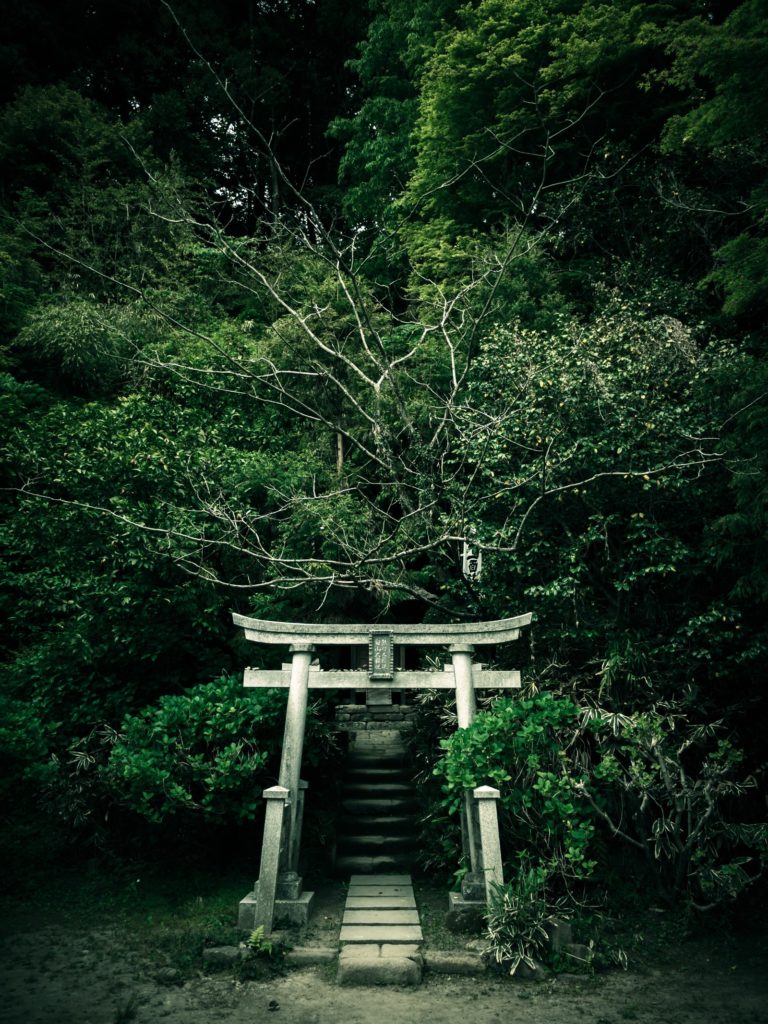
参考にする文章は、ハーンが晩年に書いた日本論 “JAPAN, AN ATTEMPT AT INTERPRETATION”(邦題『日本-一つの試論』または『神国日本』)。『怪談』は有名だが、こちらはからきし。それが不思議なくらい宗教論として質が高いと思うのだが・・・。
外面の奇妙さと内面の不可思議さ
ハーンは序章で日本の二重の奇妙さを語っている。明治日本を訪れた外国人はまず目に見える奇妙さに驚く。手入れされた自然、街並み、鉢植え、行水、人々の外見、所作、生活習慣、仕事ぶり、道具、絵画、骨董、芝居、文学、言語、考え方―、それらはすべて欧米に類例がなく、新旧が渾然一体となって活動している姿に当惑し、驚嘆した。
しかし、とハーンは続ける。
But the underlying strangeness of this world,–the psychological strangeness,–is much more startling than the visible and superficial.
(中略)
The ideas of this people are not our ideas; their sentiments are not our sentiments, their ethical life represents for us regions of thought and emotion yet unexplored, or perhaps long forgotten.
しかし真に驚くべきことは、外形的奇妙さの奥に動いている精神の奇妙さなのである。
(中略)
日本人の考えは西洋人と違う。彼らの感情は西洋人の感情ではない。日本人の倫理的な暮らしぶりは、西洋に未発達な、あるいは遠い昔に忘れ去られた類の、思考と感情が支配する領域から生まれたものである。
キーワード・キーフレーズ
- thought and emotion yet unexplored, or…long forgotten・・・西洋人は遠い昔に、日本人が続けている倫理的生活の探求をやめた、だから忘却したのだろう。懐かしいはずだが懐かしめない。その奇妙さを日本人の中に感じるから、”psychological strangeness” なのである。
ハーンはギリシャとアイルランドの混血なので、さかんに古代ギリシャ文化を引き合いに出し、こんな感じで自分たちの感覚を説明する。
我々はギリシャの彫刻や哲学に親しんでいるが、ギリシャ人の奥深い内面に共感することはできない。彼らの本当の愉しみや苦しみがわからない。同じアーリア人にしてそうなのだ。ましてや日本人の内面(倫理的生活)となればお手上げだ。それはギリシャよりさらに古い、いわば太古の生き霊を宿した存在なのだから。
太古の魂が、未開とはほど遠い19世紀末の日本文明の中に現役で活動していることの不思議。
日本宗教の根底にあるもの
この太古の生き霊のごとき倫理性(精神性)はどこから生まれてくるのか?
ハーンは先祖崇拝(ancestor worship)だというのである。
The real religion of Japan, the religion still professed in one form or other, by the entire nation, is that cult which has been the foundation of all civilized religion, and of all civilized society, ―Ancestor-worship.
In the course of thousands of years this original cult has undergone modifications, and has assumed various shapes; but everywhere in Japan its fundamental character remains unchanged.
日本の本当の宗教、様々かたちでいまも全国で行われている宗教は、あらゆる文明社会の宗教の基礎にある先祖崇拝である。
数千年に及ぶ歴史の中で変化や改良を重ねてきたが、日本のどこへ行っても、祭祀の基本的性格は変わっていない。
三段階の発展
The three forms of the Shinto worship of ancestors are the Domestic Cult, the Communal Cult, and the State Cult; ―or, in other words, the worship of family ancestors, the worship of clan or tribal ancestors, and the worship of imperial ancestors. The first is the religion of the home; the second is the religion of the local divinity, or tutelar god; the third is the national religion.
神道は三つの祭祀形式を並行して行っている。発生順に、家の先祖を祀る宗教(祖霊信仰)、部族の守り神を祭る宗教(氏神信仰)、国家元首の先祖を祀る宗教(皇室神道)の三つである。
キーワード・キーフレーズ
- ancestor worship・・・ancestral worshipとも。先祖崇拝の祭祀を表現する場合は、ancestral ritual(s)。
- 神道と総称される日本の信仰には家(domestic)、部族(communal)、国家(state)の3つのレベルがある。
- 家の神は最も基本となる、一族の先祖の霊だ。
- 部族の神は氏神と呼ばれる。氏神と氏神の連合体が国家となり、天皇を頂点とする国家祭祀が生まれた。
- 皇室は皇室の先祖、すなわち神話の神々を崇拝する。古事記や日本書紀の神々は、皇室の先祖であり、当然、他の部族の神々とは異なる。ここに日本史の謎を解くカギが隠れているような気がする。
- これらすべての祭祀の共通基盤にあるのが先祖(祖霊)信仰。日本は中国や仏教から様々な影響を受けたが、この基層レベルの信仰だけは崩したことがないというのがハーンの見立てである。
- cult・・・いわゆる狂信的集団の意味ではない。もともとは特定集団の宗教祭祀を指す。cultの語源はcultureと同じくラテン語のcultus(”tend, cultivate”)。「世話する」、「耕す」だから、崇拝の対象をかいがいしく世話する、あるいは祀るという意味になる。
原始信仰のかたち
神道の根っこにある原初の祭祀とはどういうものか?ハーンの説明を聞こう。
祖霊信仰(ゴースト)
The earliest ancestor-worship,–“the root of all religions,” as Herbert Spencer calls it,–was probably coeval with the earliest definite belief in ghosts. As soon as men were able to conceive the idea of a shadowy inner self, or double, so soon, doubtless, the propitiatory cult of spirits began.
初期の先祖崇拝は、霊(ゴースト)というものが明瞭に信仰の対象となると同時に生まれた、あらゆる宗教の起源である。得体のしれない自己を内面に見い出すや、人間はその生き霊をなだめる(なぐさめる)祭祀を始めた。
…there primarily existed no difference whatever between the conception of ghosts and the conception of gods. There were, consequently, no definite beliefs in any future state of reward or of punishment,–no ideas of any heaven or hell. Even the notion of a shadowy underworld, or Hades, was of much later evolution.
原初の信仰においてはゴーストと神の間に区別はなかった。将来の報い、罰といった観念もなかった。したがって天国や地獄、冥界(ギリシャ神話のハデス)の概念も存在しなかった。
キーワード・キーフレーズ
- propitiatory、propitiation・・・「なだめる」こと、転じて贖罪もしくは捧げもの。cultが「世話する」の意味を持つように、霊や神はケアすることが大事な基本なのだ。その根底には死者への畏れが存在する。だから、”propitiatory cult of spirits” 、「先祖の霊をなぐさめる祭祀」は神道の基本となった。
死者との共棲
At first the dead were thought of only as dwelling in the tombs provided for them,–whence they could issue, from time to time, to visit their former habitations, or to make apparition in the dreams of the living. Their real world was the place of burial,–the grave, the tumulus. Afterwards there slowly developed the idea of an underworld, connected in some mysterious way with the place of sepulture.
最初、死者は墓または塚に住んでいて折に触れた生前の棲み処に帰ってくると考えられた。後に埋葬の習慣に関連して地下世界(冥界)の発想が徐々に定着していった。
The ghosts of the departed were thought of as constant presences, needing propitiation, and able in some way to share the pleasures and the pains of the living. They required food and drink and light; and in return for these; they could confer benefits. Their bodies had melted into earth; but their spirit-power still lingered in the upper world, thrilled its substance, moved in its winds and waters. By death they had acquired mysterious force;–they had become “superior ones,” Kami, gods.
死者はつねに生者のまわりにいて、鎮めを必要とした。亡くなった人の霊(ゴースト)は彼らなりに生者と喜怒哀楽を共にする。彼らは食べ物や飲み物や光を要求する。そうすれば生者にご利益をもたらす。肉体は地に還ったが、霊力は地上に留まる。風や水となって地上界をざわつかせる。人間は死ぬことで神秘的な力を獲得する。この神秘的な力をもった者たちが「畏きもの」すなわち神となった。
キーワード・キーフレーズ
- By death they had acquired mysterious force・・・人は死によって超自然的な力を獲得する、この感覚が人間の宗教感情の最も基本にあるという。
- 日本の神という観念はこの感覚をベースにしているとハーンをいうのだ。
- 日本人はスーパーナチュラルな力(霊威)をあらゆる物象に感じる繊細な情感に恵まれていた。そのため、様々な自然現象や奇観や奇形が神になった。神は自然と同じく複数の相をもつ(和魂、荒魂、幸魂、奇魂)。
- 先祖の御霊の場合、基本キャラは生前の性格によって決まる。乱暴だった人は神になっても乱暴、やさしかった人はやさしく、強かった人は強い。しかし、いい人わるい人に関係なく、死ねば超能力を身につけるのだから、神は畏(かしこ)きもの、目に見えない恐ろしいものなのだ。
供犠の発生
The history of all religious sacrifices can be traced back to this ancient custom of offerings made to ghosts; and the whole Indo-Aryan race had at one time no other religion than this religion of spirits. In fact, every advanced human society has, at some period of its history, passed through the stage of ancestor-worship; but it is to the Far East that we must took today in order to find the cult coexisting with an elaborate civilization.
宗教の供犠の原点はゴーストに対する捧げものにある。インド・アーリア人の祖霊崇拝もそうで、先進社会は例外なく歴史のある時点でこの先祖崇拝の段階を経ている。だが、先進社会と原初的な祭祀の共存は現在、東アジアにしか見られない。
殯(もがり)・服喪・宮(神社)の起源
There is reason to believe that the family-dwelling was at first permanently, not temporarily, abandoned to the dead; and in view of the fact that the dwelling was a wooden hut of very simple structure, there is nothing improbable in the supposition.
At all events the corpse was left for a certain period, called the period of mourning, either in the abandoned house where the death occurred, or in a shelter especially built for the purpose; and, during the mourning period, offerings of food and drink were set before the dead, and ceremonies performed without the house.
One of these ceremonies consisted in the recital of poems in praise of the dead,–which poems were called shinobigoto. There was music also of flutes and drums, and dancing; and at night a fire was kept burning before the house. After all this had been done for the fixed period of mourning–eight days, according to some authorities, fourteen according to others–the corpse was interred.
It is probable that the deserted house may thereafter have become an ancestral temple, or ghost-house,–prototype of the Shinto miya.
死者が出た家屋は永久に放棄されたと考えられる。家屋は構造が単純な木造の平屋だったから不合理な推論ではない。
遺体は喪と呼ばれる一定期間、放棄された家屋か、専用の施設(喪屋)に安置された。遺体の前には食べ物や飲み物が捧げられ、屋外で葬送儀礼が行われ、死者を讃える詞(誄詞、しのびごと)や音曲や踊りが振る舞われた。夜になるとかがり火が焚かれた。8日間とも14日間ともいわれる殯(もがり)の期間が過ぎると遺体は埋葬された。
放棄された家屋は祖霊の棲み処となり、後の神社の原形になったのではないかと思われる。
日本人の先祖は遊牧民?
The custom of deserting the house in which a death took place would accord with the theory of a nomadic ancestry for the Japanese people: it was a practice totally incompatible with a settled civilization like that of the early Greeks and Romans, whose customs in regard to burial presuppose small landholdings in permanent occupation.
このような家屋を放擲する習慣は日本人の遊牧民起源説を支持するのではないか。家屋の放棄は古代ギリシャやローマなどの定住社会の習慣と相容れない。ギリシャやローマでは自宅敷地の一部を埋葬用に使う習わしだった。
キーワード・キーフレーズ
- sacrifice・・・宗教の供犠は死者への捧げものが原点。霊をなだめるには貴重なものを捧げるという発想から、後には家畜や人間(人柱)が捧げられることもあった。
- family-dwelling…abandoned to the dead・・・死者が発生すると居宅が打ち捨てられたという。ハーンはこれをnomadic ancestry(日本人の遊牧民発祥説)と結びつけている。
- mourning・・・殯(服喪)。皇室の殯は数か月に及ぶというが、原型はここに書かれているような死者の弔いである。日本宗教は下から上まで見事に一貫している。
- nomadic ancestry・・・漠然と、日本人は農耕民族というイメージが定着している現在、この日本人遊牧民起源説は注目すべき指摘だ。
- 騎馬民族説など一部には有名な学説があるものの、学界の主流ではない。でも、なぜ北海道や東北では馬産が盛んなのか、真剣に研究すべきテーマではないか。
- 日本の歴史学界はタコつぼ社会の典型で、東洋史、西洋史、日本史と棲み分け、お互いの疎通がない(役所の縦割り行政に近く、神道でいえば部族の氏神レベル)。
- ゲノム解析が進んで父系のY染色体の伝播ルートを辿れば、日本人の起源が少なくても4ルートくらいあり、その一部は中央アジアを通って樺太方面から北海度へ渡来したことは明白である。彼らは遊牧系だろう。しかも宗教祭祀の基礎をつくっているくらいなら、太古の中心勢力であった可能性が高い。
死の忌避・穢れ
The peculiar character of the early human sacrifices at graves, the character of the funeral-rites, the abandonment of the house in which death had occurred.–all prove that the early ancestor-worship was of a decidedly primitive kind. This is suggested also by the peculiar Shinto horror of death as pollution: even at this day to attend a funeral,–unless the funeral be conducted after the Shinto rite,–is religious defilement.
墓前に生き埋めにした人柱を捧げる奇妙な風習、葬礼、死者の家の放棄―、これらは日本の先祖崇拝が最も原初的なタイプであることを証している。死を穢れと見て恐れる心性も同様の原初的な感情だろう。今日でさえ、葬儀への参列は宗教的な穢れと考えられている。
The ancient legend of Izanagi’s descent to the nether world, in search of his lost spouse, illustrates the terrible beliefs that once existed as to goblin-powers presiding over decay.
Between the horror of death as corruption, and the apotheosis of the ghost, there is nothing incongruous: we must understand the apotheosis itself as a propitiation.
記紀神話で伊邪那岐は亡き妻伊邪那美に会うべく禁忌を侵して地下の黄泉に赴くが、腐乱した妻の死体には蛆がたかっている。
このような死による崩壊の恐怖と、死霊(ゴースト)の神聖視は矛盾しない。神聖視そのものが霊をなぐさめる行為になっているからである。
This earliest Way of the Gods was a religion of perpetual fear. Not ordinary homes only were deserted after a death: even the Emperors, during many centuries, were wont to change their capital after the death of a predecessor.
原初の神道は絶え間ない恐れの宗教であった。死を忌避する心性は、死者の家の放棄に始まり、先帝の崩御に伴い行われた遷都に至るまで一貫している。
But, gradually, out of the primal funeral-rites, a higher cult was evolved. The mourning-house, or moya, became transformed into the Shinto temple, which still retains the shape of the primitive hut.
しかし、原初的な葬礼は次第に制度化していった。そして喪屋は神社(宮)となった。社殿が素朴な小屋のかたちをしているのはその名残である。
キーワード・キーフレーズ
- horror of death as pollution・・・死の穢れ
- apotheosis as a propitiation・・・菅原道真、平将門を
孝の重要性
神道の基礎である家の宗教においては家族そのものが宗教であり、かつて先祖の居住した家が宮(神社)となる。家の宗教を継続するために重要だったのは、孝という徳である。
Filial piety in Japan does not mean only the duty of children to parents and grandparents: it means still more, the cult of the ancestors, reverential service to the dead, the gratitude of the present to the past, and the conduct of the individual in relation to the entire household.
日本の孝は、子から両親への、祖父母への義務だけを意味しない。先祖崇拝を通じて、死者を敬い、今日あるを過去に感謝し、家全体を考えた振る舞いをすることを意味した。
キーワード・キーフレーズ
- filial piety・・・一般に孝といえば儒教的な思想と考えられているが、ハーンは違う。それは神道の最基層にある家という集団を維持していくうえで自然に発生した考えだというのだ。
- たとえば、武家が社会の主力となると、忠義、殉死、切腹といった思想があらわれるが、それも家を守るという視点から見ればすべて筋が通っている。家を守るに当たっては先祖(祖霊)が最重要であり、個人(プライバシー)は二の次だ。祖霊の名誉を汚さぬよう、祖霊のつくりあげた家族を壊さぬよう振る舞うのが末裔の義務なのである。
- なぜなら、家あってこそ個人の名誉も徳義も行動規範も愛情も生まれてくるからだ。古代の日本人は個人ではなく家族を単位として人間のあり方を考えた。そして、その基本には死者(先祖)に対する畏れ、篤い信仰があったのである。
家父長制・男系社会
The reader is doubtless aware that in the old Aryan family the bond of union was not the bond of affection, but a bond of religion, to which natural affection was altogether subordinate. This condition characterizes the patriarchal family wherever ancestor-worship exists.
Now the Japanese family, like the ancient Greek or Roman family, was a religious society in the strictest sense of the term; and a religious society it yet remains.
古代アーリアの家族は愛情の絆よりも宗教の絆で団結していた。愛情は二次的なものだった。これは先祖崇拝を行う家父長制の家族に顕著な特徴である。
日本の家族は、古代ギリシャやローマの家族同様、ことばの厳密な意味で宗教的な家族だった。現在の日本社会もまた宗教的な社会である。
キーワード・キーフレーズ
- patriarchal family・・・皇室が男系継承であることからもわかるように、家→氏神→皇室と流れた日本の宗教伝統においては母胎集団である家の存続が至上命題だった。世継を生むのが嫁の仕事だった。これは日本に限らず古代アーリア人の社会でも同じだったようだ。
原初的信仰の共通思想
There survive in it especially these three beliefs, which underlie all forms of persistent ancestor-worship in all climes and countries:–
I.–The dead remain in this world,–haunting their tombs, and also their former homes, and sharing invisibly in the life of their living descendants;–
II.–All the dead become gods, in the sense of acquiring supernatural power; but they retain the characters which distinguished them during life;–
III.–The happiness of the dead depends upon the respectful service rendered them by the living; and the happiness of the living depends upon the fulfilment of pious duty to the dead.
To these very early beliefs may be added the following, probably of later development, which at one time must have exercised immense influence:–
IV.–Every event in the world, good or evil,–fair seasons or plentiful harvests,–flood and famine,–tempest and tidal-wave and earthquake,–is the work of the dead.
V.–All human actions, good or bad, are controlled by the dead.
先祖崇拝の基本思想は以下の3つである。
- 死者はこの世にいる。墓や生前の住居にいて、見えないかたちで生者と生活をともにしている。
- 死者はみな神になり、超自然的なパワーを獲得する。どんなパワーかは故人の生前の性格によって異なる。
- 死者の安寧は生者のもてなし(なだめ)にかかっている、生者の安寧はどれだけ死者を敬うかにかかっている。
後に以下の2つの考えが加わり、大きな力をふるった。
- 天変地異は死者の業である。
- 人間の行動は善行・悪行を問わず、死者が支配している。
<記事引用終わり>
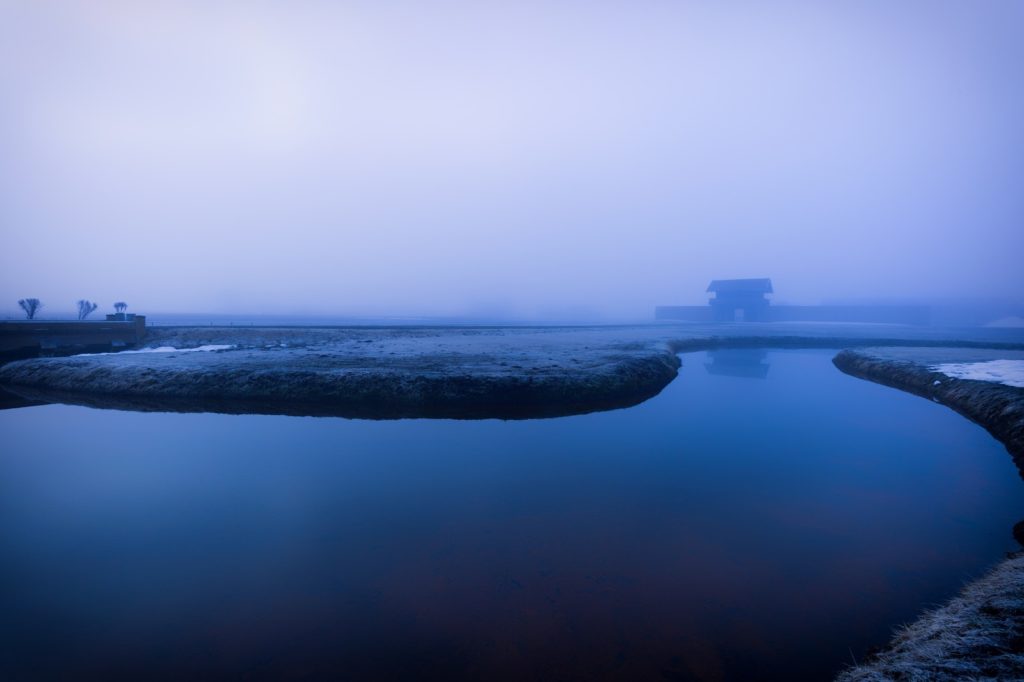
「宗教」という定義に当てはまらない日本社会
まだまだ紹介したいところだが、この辺りでやめておこう。
先祖崇拝は個人を抑圧する面が強かったものの、個人が解放された現代においても脈々と受け継がれている。たとえば、正月やお盆が本当は神を迎える古い古い儀式の名残りであることなど誰も意識しない。
- 正月は歳神様をお迎えして、新たな年の豊穣と息災を祈念する行事だし、お盆は一年に一度祖霊が里に帰ってくるのを迎えるもてなしの行事だ。一年はこの二つで区切られていた。いろいろ後から尾ひれ(仏教)がついたが、元が純日本製の習俗であることに変わりはない。
- 日本では、宗教がそれと意識されないくらい体質化し、生活習慣になっているだけなのである。
- 太古の日本人はこうした習俗の意味やしきたりを文字に残さず、先輩から口伝で教わった。口承文化がなければ、太安万侶は存在せず、古事記は成り立たなかった。
- 口伝宗教は、今日の大勢を占める啓典宗教(文字で書かれた啓典の存在する宗教)とは違う。日本古来の信仰を、現代的な宗教概念で論ずること自体がおかしいのかもしれない。
西洋人の苦悩の反響
先祖崇拝が人々の倫理として内面化された日本社会をハーンはある種の理想郷ととらえた。そこには、彼の故地ヨーロッパの知識人が直面していた喪失の感覚が反響しているように思われる。
誰も公言しないが、このハーンの時代も、EU化したいまの時代も、ヨーロッパ人の苦悩の源泉はただひとつ、先祖との断絶感にあると思う。基層信仰との断絶と言い換えてもいい。
断絶の主犯はキリスト教である。彼らがイエスを憎んでいるというのではない。愛しているし敬ってはいるのだが、しょせんは血のつながらない他人なのである。だから何かにつけユダヤ人が問題になる。
翻って日本人はどうか?本当はいまも先祖につながっている果報者なのである。ところが、共棲社会だ、多元的価値観だ、インバウンドだ、早期英語教育だ・・・と、外に合わせることばかりに気を取られている。
ご先祖様に申し訳が立たない。
関連記事:
【英語で読む日本人と宗教01】”最も信心深い無宗教国家”
【英語で読む日本人の宗教02】個々人に織り込まれた宗教性


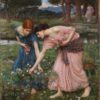
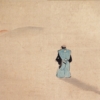
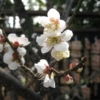
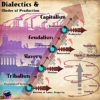
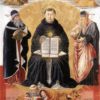

ディスカッション
コメント一覧
まだ、コメントがありません